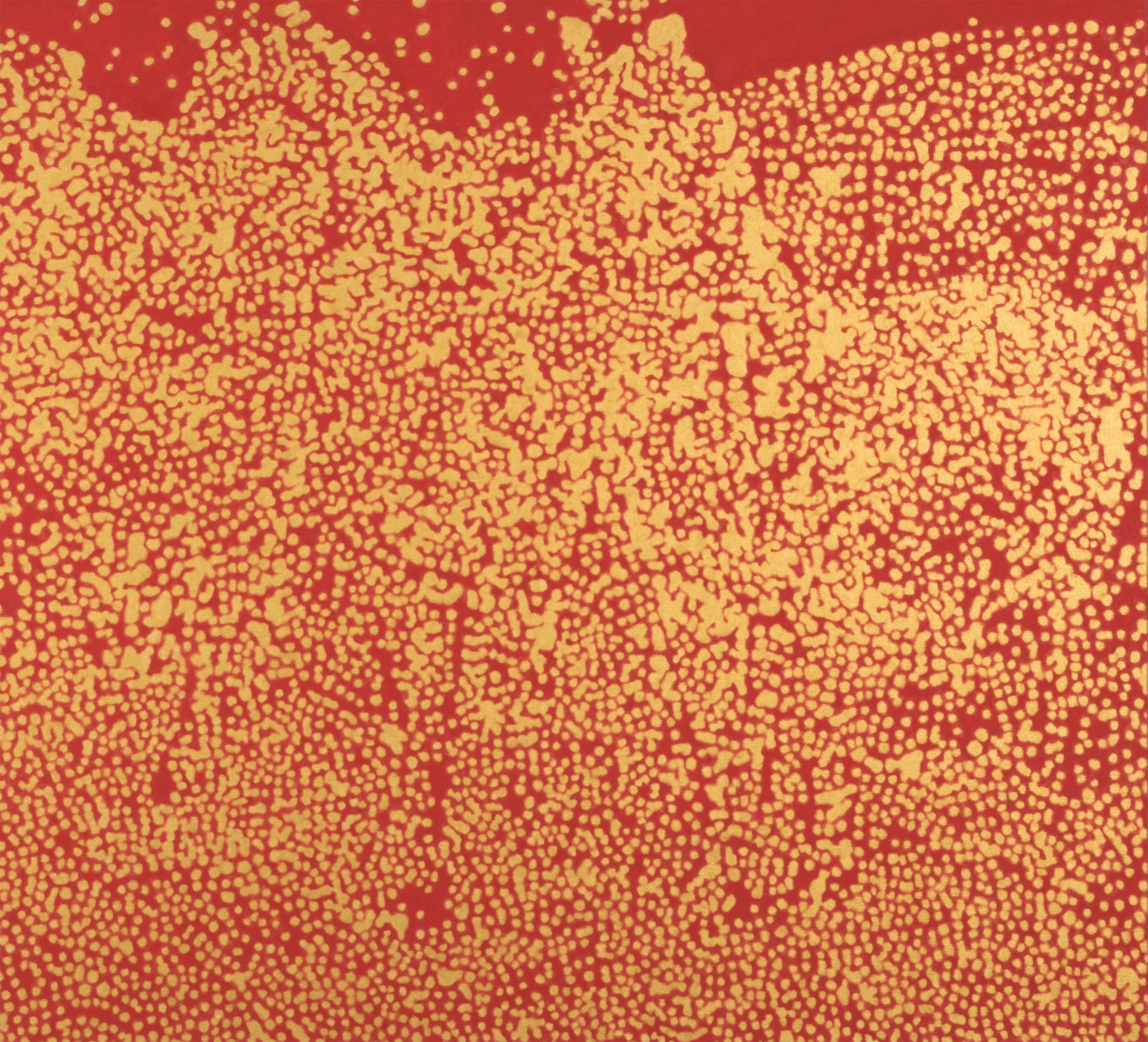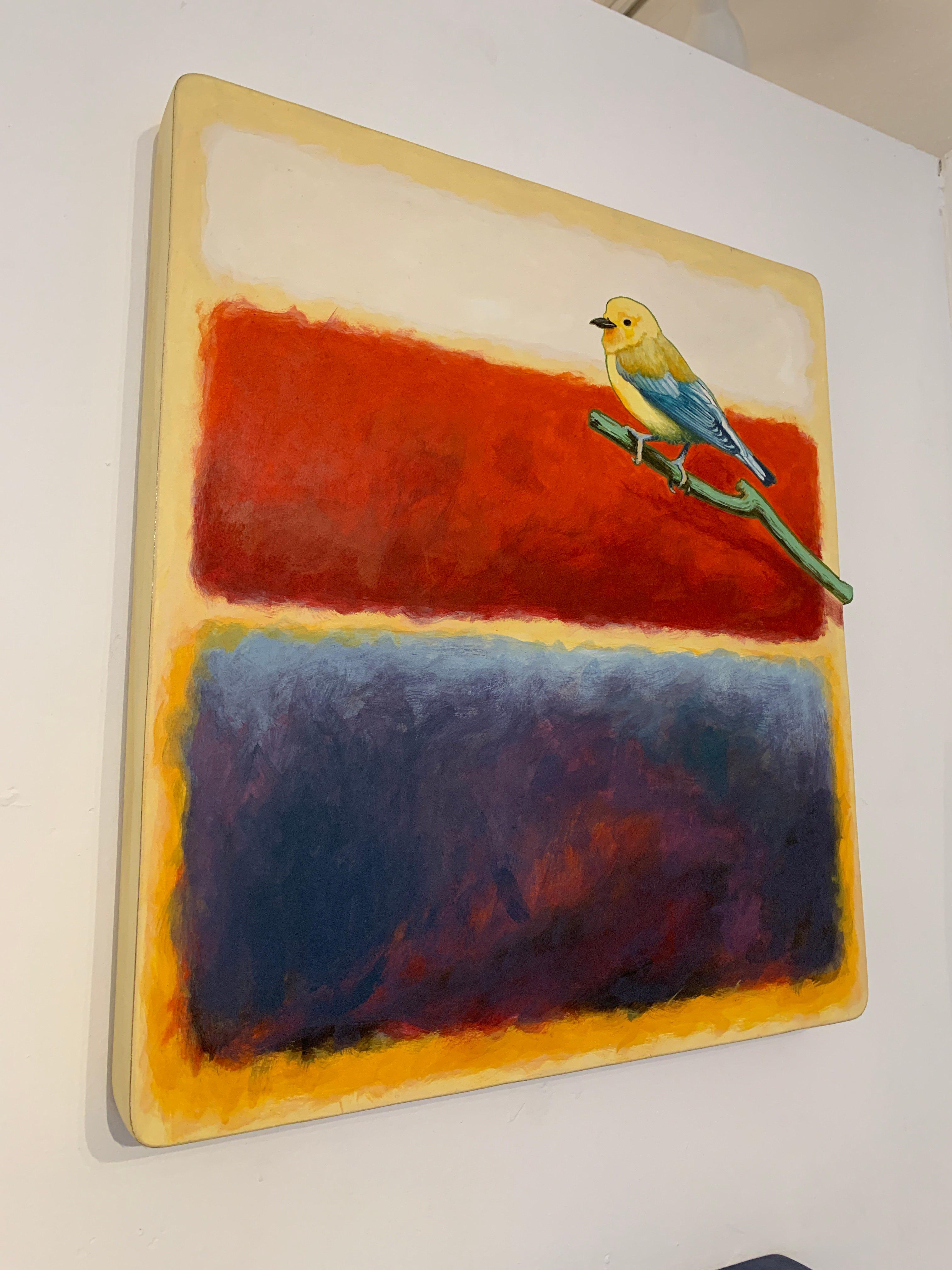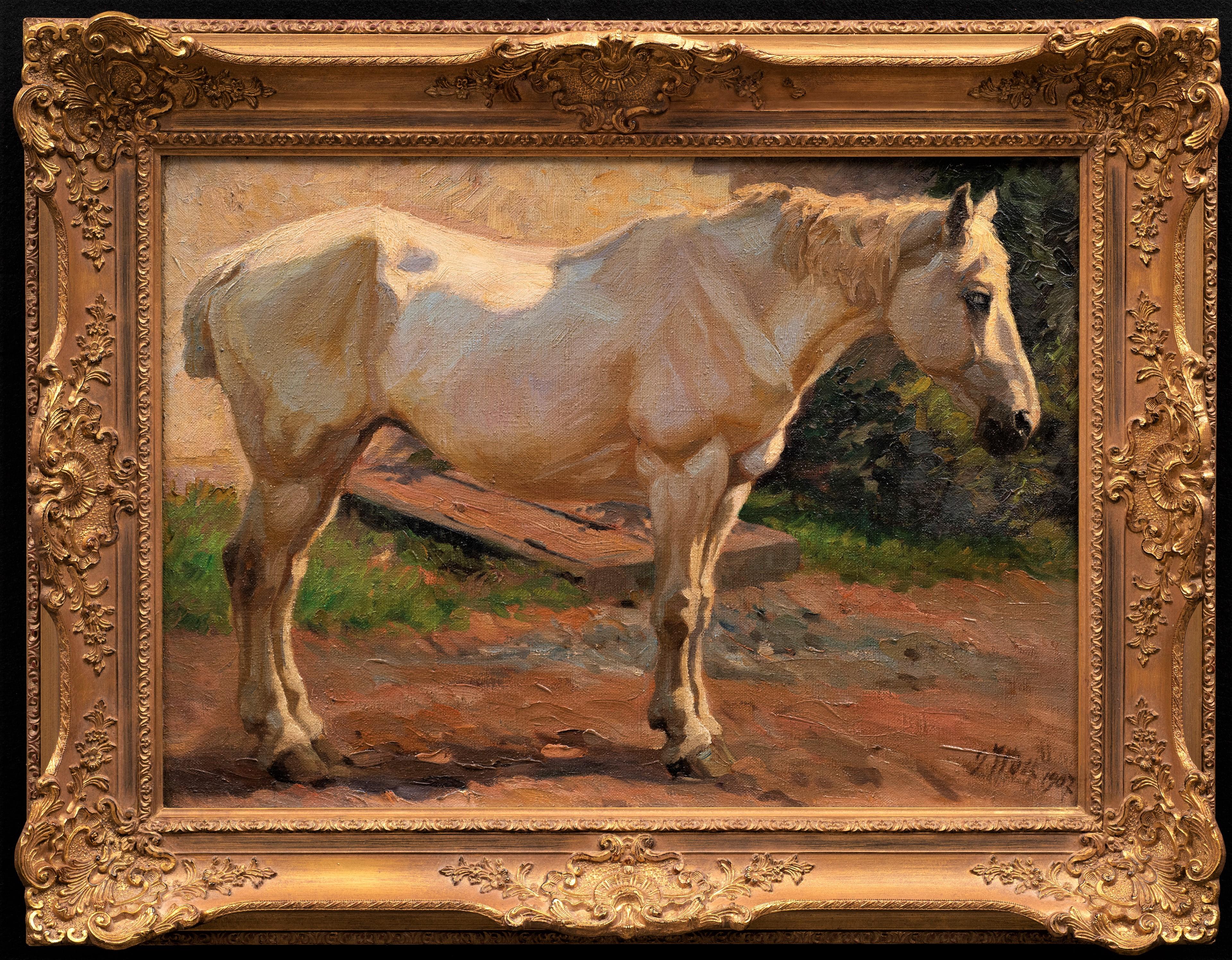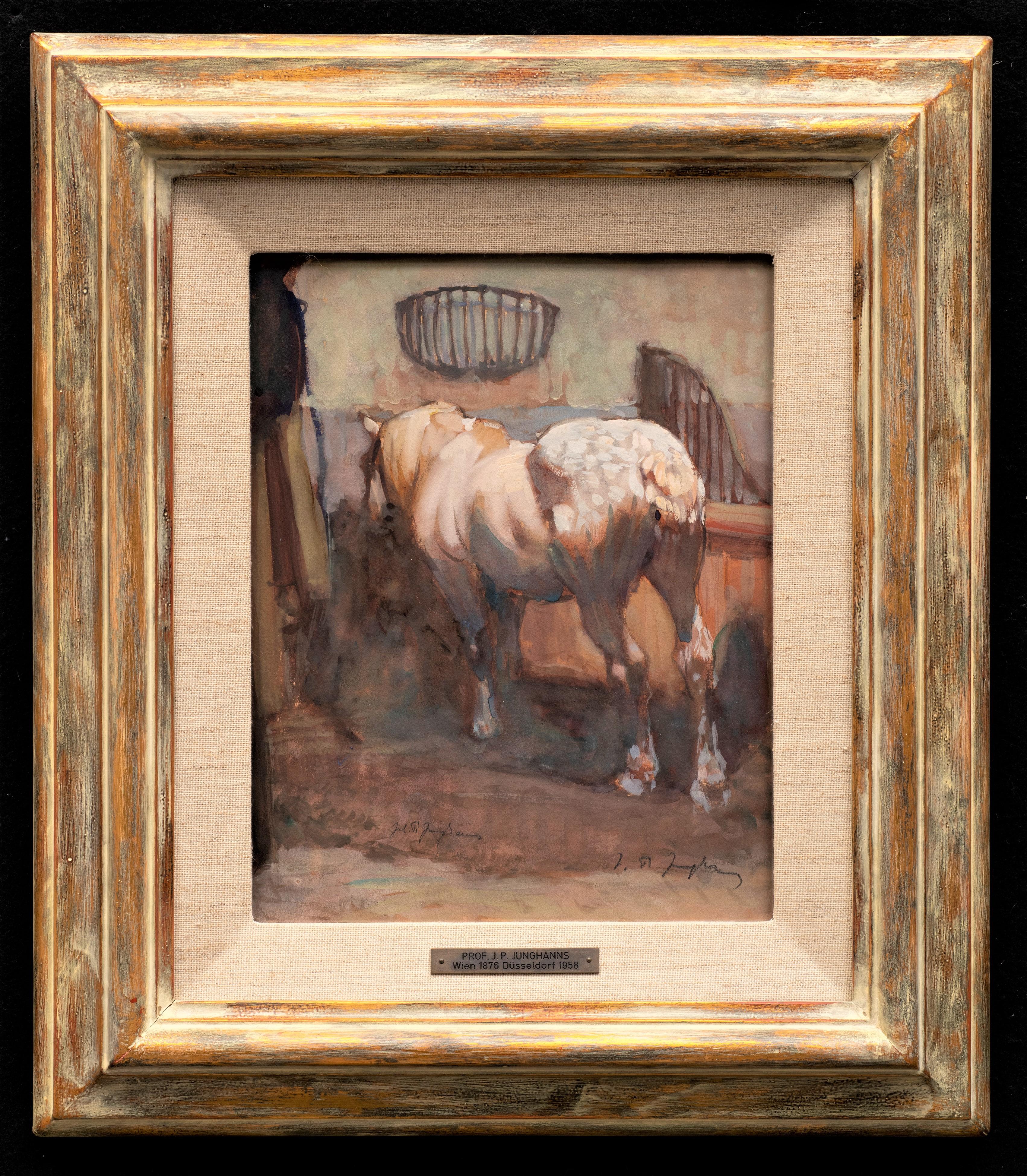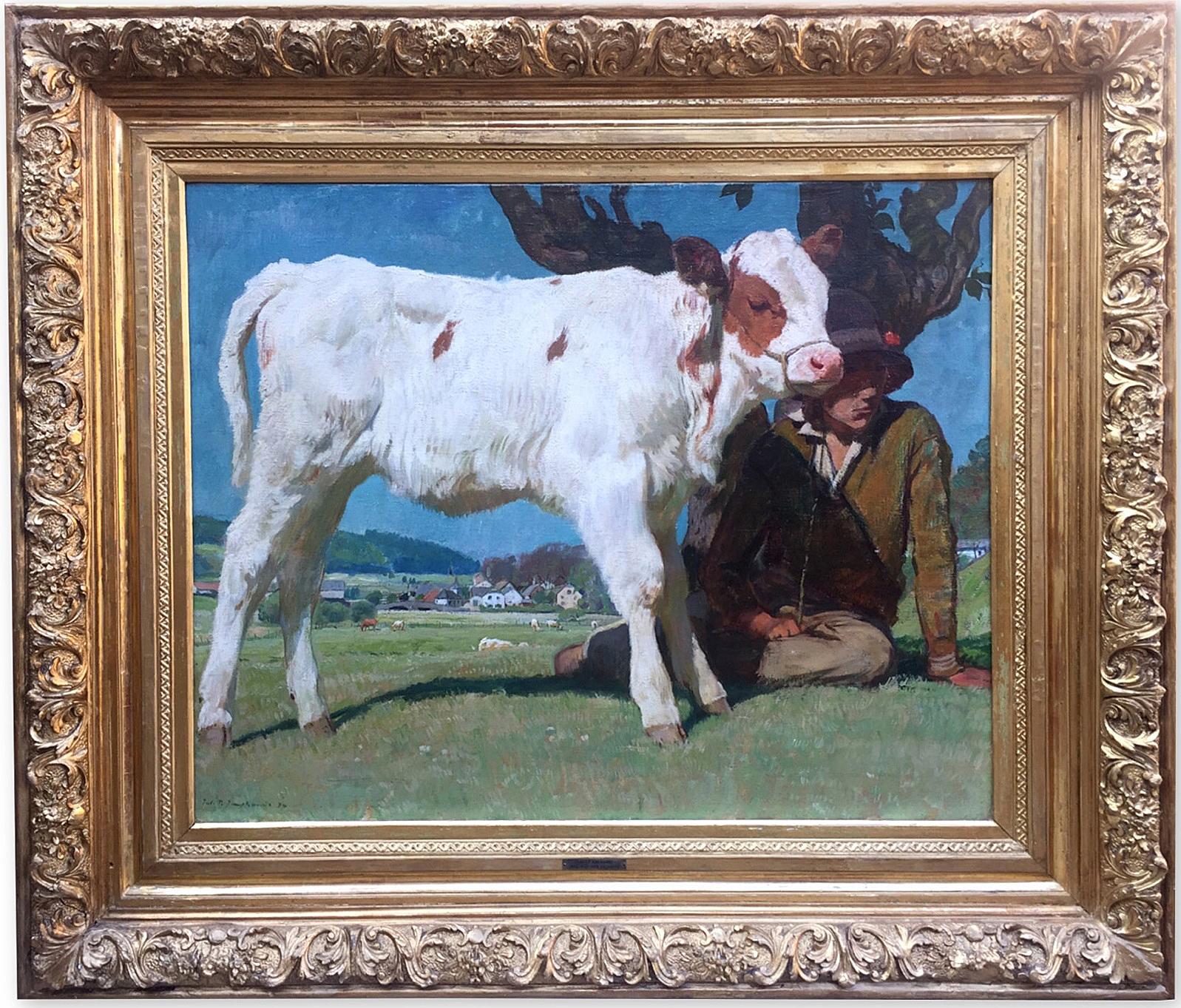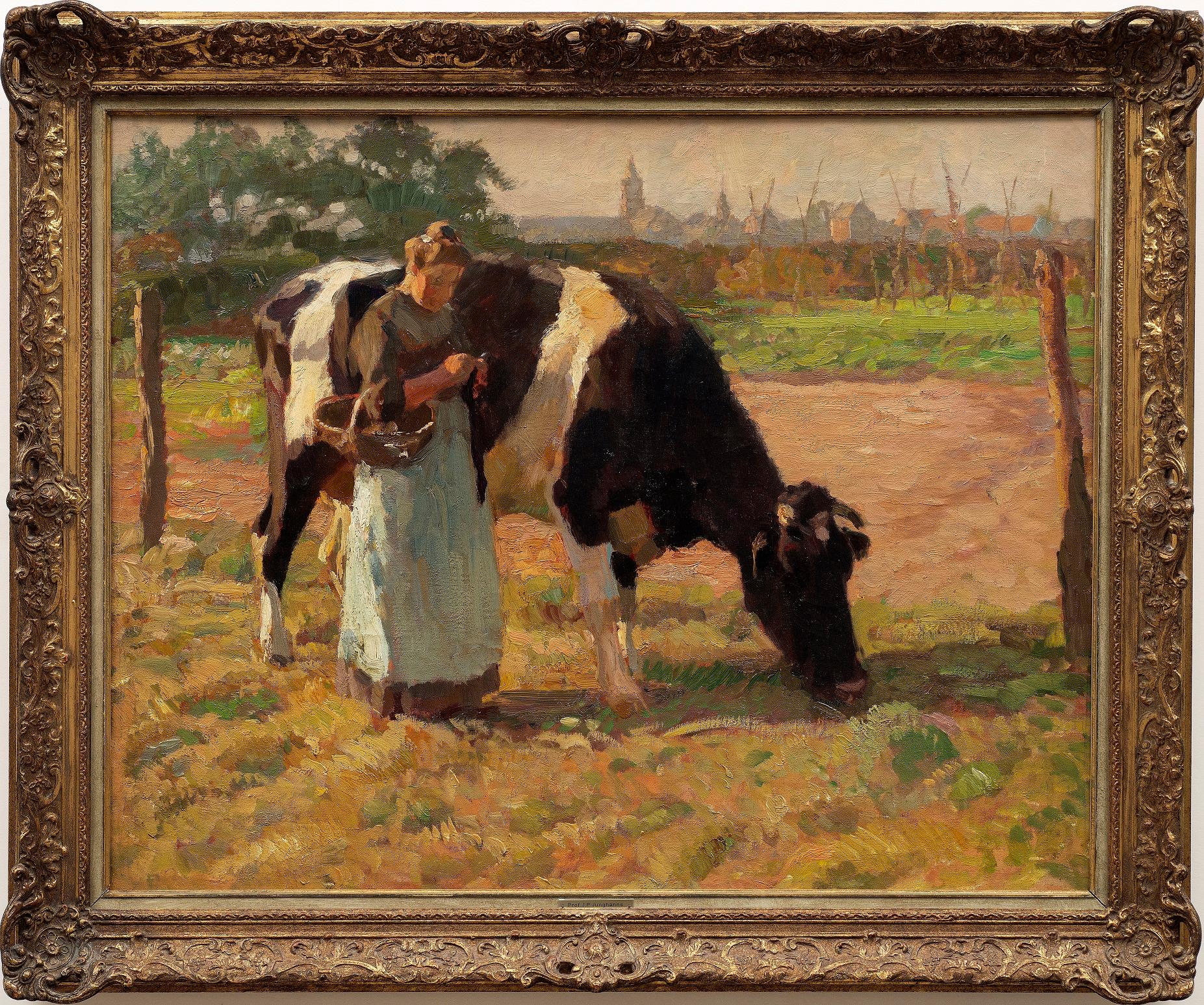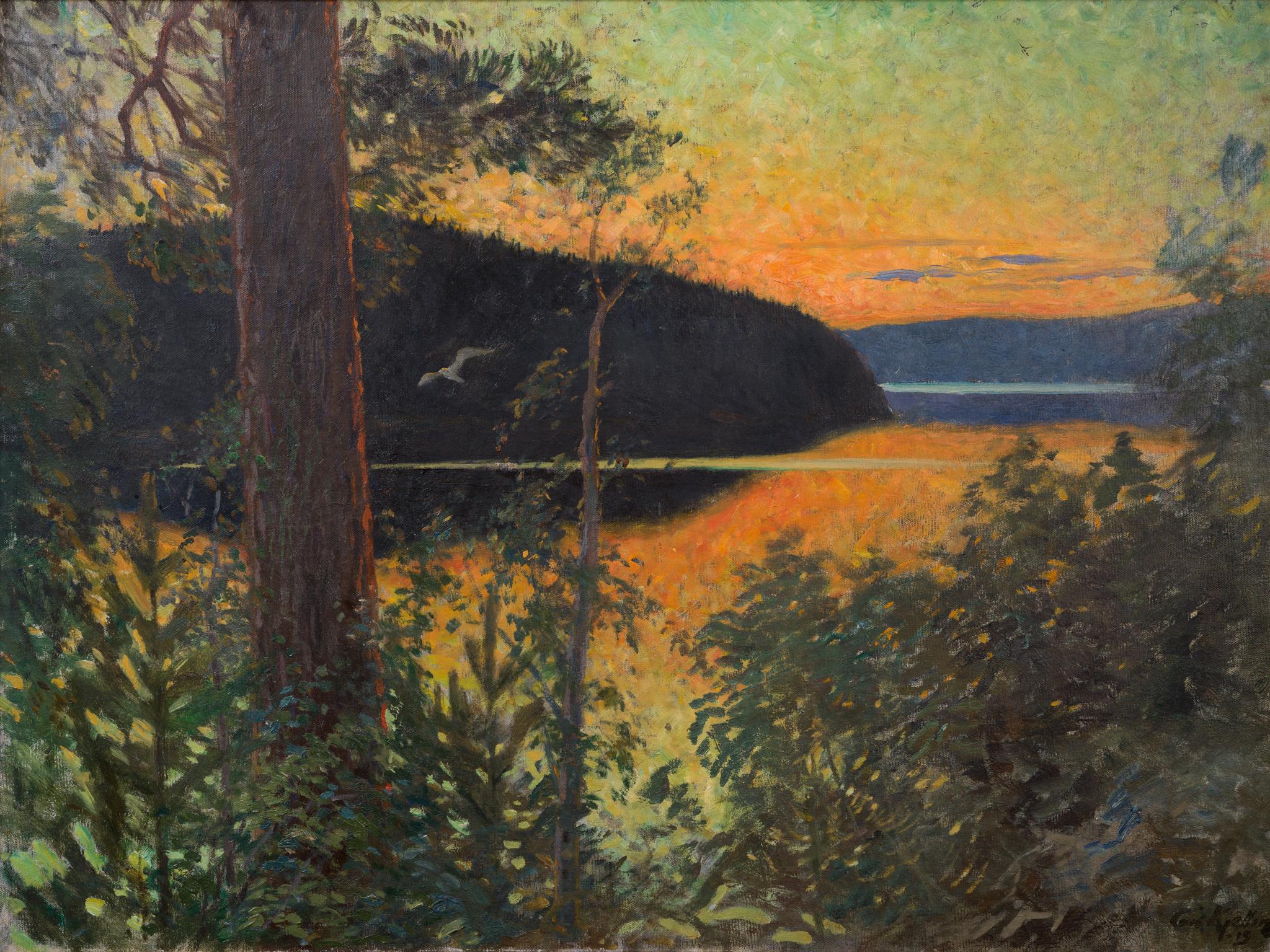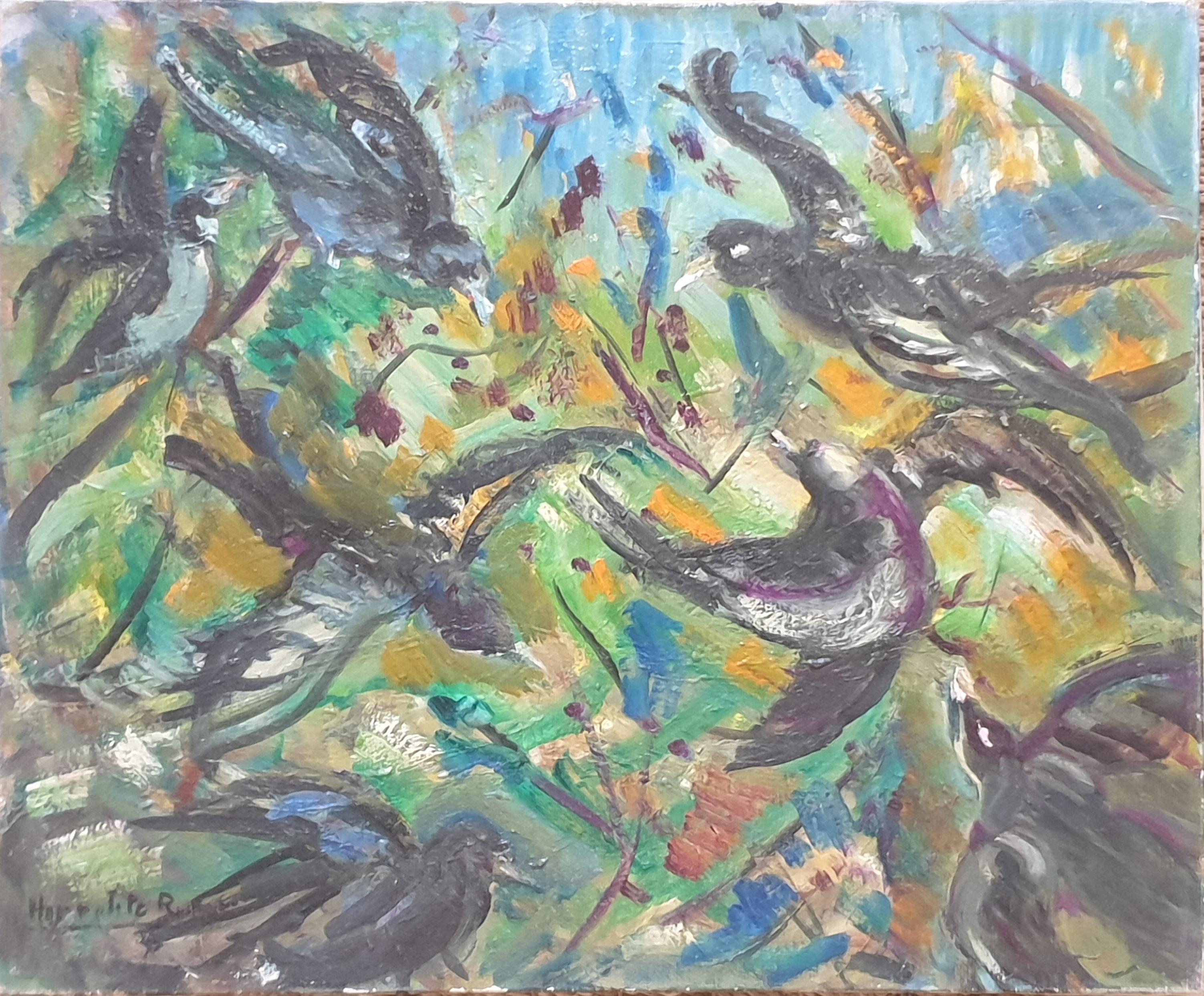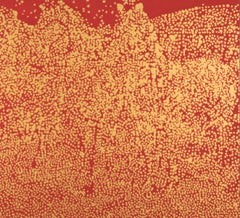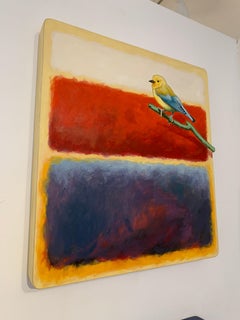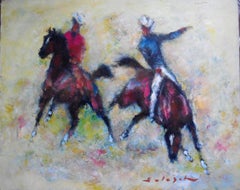
Cowboys on Horseback, Rodeo
Want more images or videos?
Request additional images or videos from the seller
1 of 2
Denes de HoleschCowboys on Horseback, Rodeo
About the Item
- Creator:Denes de Holesch (1910 - 1983, Hungarian)
- Dimensions:Height: 8.75 in (22.23 cm)Width: 10.75 in (27.31 cm)
- Movement & Style:
- Period:
- Condition:
- Gallery Location:Surfside, FL
- Reference Number:1stDibs: LU382199582
About the Seller
4.9
Platinum Seller
These expertly vetted sellers are 1stDibs' most experienced sellers and are rated highest by our customers.
Established in 1995
1stDibs seller since 2014
1,549 sales on 1stDibs
Typical response time: 1 hour
More From This SellerView All
- Cowboys on Horseback, RodeoBy Denes de HoleschLocated in Surfside, FLThis is an oil on canvas by the important Hungarian-born and internationally celebrated Denes de Holesch (1910-1983).this is the original rare oil painting. Denes de Holesch was an international equestrian artist. His works have been exhibited all over the world, including in New York, Beverly Hills, Boston, Chicago, Paris, Mexico City, Montreal, Tokyo, Sydney, and Madrid. His horse paintings fall into one of seven themes, including polo, cowboys, circus, rodeo, hunt, bull-fight, race-course and running free. His mastery of the subject has been compared to that of Picasso, Delacroix and Franc Marc. 1910 Denes Dezo George de Holesch was born on 9 February, 1910 at Banska-Bystrica, Northern Hungary. He was the third child and youngest son of Hugo de Holesch, an architect and Margit, nee Wagner. Many generations of the de Holesch family had worked as professional architects. He studied at the Hungarian Academy of Fine Arts in Budapest on a scholarship. Early in his career he traveled to China, Japan, Philippines, Java, Bali and Australia, where his reputation grew rapidly. Here he produced portraits in oils, and lithographs of the Chinese, as well as landscape works in oils,depicting the local countryside, and canal, street and city scenes. His exposure to the arts of the Chinese, with their simplicity of line, greatly influenced his later works. In 1939 he established a studio at Lavender Bay near Sydney. In 1940 he exhibited at the Macquarie Galleries in Sydney. In 1944 he married Joyce Greer, the Melbourne concert pianist. In 1945 the couple moved to New York where his interest in horses grew. He held exhibitions at Gallery Wildenstein, Herve, and FAR Gallery. In 1946 Holesch moved to Montreal where he exhibited at the National Gallery of Montreal. In 1947 he moved to Boston where he continued painting portraits and horses. He exhibited there at the Ehrmann and Vose galleries. Later in the year he moved to San Francisco where he was invited to participate in the "Renoir to Picasso" Exhibition held at the Maxwell Gallery.1946 He moved to Montreal, Canada and exhibited at the National Gallery of Montreal. (Frederic Remington and Charles Russell) 1947 Early in the year he moved to Boston and continued painting portraits and horses. In June, he painted the portrait of Harvard Law School Dean, Erwin N. Griswold, and in October his works were exhibited at Margaret Brown's Galerie Intime, Newbury Street, Boston. 1948 He produced a clay sculpture head of Egon Petri, one of a number of clay sculptures that he produced. He also produced a number of wood carvings. His paintings were chosen for inclusion in a Group Exhibition in the National Gallery of San Francisco, and in the important and prestigious 'Renoir to Picasso' Exhibition held at Maxwell's Galleries, 372 Sutter Street, San Francisco. 1953 His works were included in a Group Impressionists Exhibition held at the Ohana Gallery, London 1954 He travelled to New York, where he was commissioned to paint Herbert Gasser, Nobel Prize Winner in Biochemistry. 1955 He returned to England, and then travelled to Paris to exhibit works in the Galerie Marcel Lenoir. 1956 He again returned to New York to work on portrait commissions and for exhibitions of his works, mainly of horses. These exhibitions were held in New York, Boston, San Francisco and late in the year at the Galleries of Frank J. Oehlschlaeger at 107 East Oak Street, Chicago. During this year, visits with his family to Ringling Circus and to a rodeo in Tucson, Arizona must have impressed him greatly, for images of these events soon appeared on his canvases. His work was greatly admired by Hollywood film- stars, such as Ann Rutherford and Burt Lancaster, and David Niven purchased one of the horse paintings to give as his wedding present to Grace Kelly on her marriage to Sovereign Prince Rainier III of Monaco. 1959 The prints of 'Courtship' and 'Chargers' were produced. It has been estimated that close to a million copies of his prints were sold over the next ten years, with 'Courtship' being advertised by Stern's Book Dpt. on 5th Avenue, New York along with prints by Picasso, Degas, Goya, Modigliani, Renoir and Van Gogh. 1960 He moved to Antibes, on the French Riviera in the South-East of France. An exhibition of his works was held in the Galerie des Etats-Unis, Cannes and his works were now permanently exhibited at Galerie Madsen, Rue St. Honore, Paris and Galerie Davis, Place Vendome, Paris. 1961 Known to Picasso, he was invited to attend a special bull-fight held in the South of France, which was organized for Pablo Picasso's 80th birthday. 1975 He moved from Voulangis to Castelfontana in the Dorf Tirol overlooking Merano, Italy. He remained there for close to a year and exhibited his works in a group exhibition in Merano in which works by Salvador Dali and Annigoni were also displayed. 1979 He returned to the old farmhouse at Voulangis. During this time he painted the portrait of Pope John Paul II. 1989 a catalog and biography of Holesch entitled Holesch Horse Paintings 1910-1983 was published by Andrew Mackenzie...Category
20th Century Post-Impressionist Animal Paintings
MaterialsCanvas, Oil
- Whimsical French Folk Art, Naive, Oil Painting Madeline Marie Christine ClavierBy Madeline Christine ClavierLocated in Surfside, FLMADELINE CHRISTINE CLAVIER (1913-2015) Signature: Signed lower right & titled verso Medium: Oil on canvas Provenance: The collection of the artist's family Marie Christine Clavier was born in Saigon, Vietnam in 1913 to French parents and lived there for her formative years. She returned to France as a teenager and began to study painting. Her work quickly developed into whimsical paintings of poetry and songs – harmonized in a unique and distinct painting technique. Her work has an impasto feel and a folk art, outsider artist sensibility to it. Similar in style to Maik and other fantasy realists who use animals, flowers and foliage in their artworks. Marie Clavier painted ro herself rather than for profit as she was quite independently wealthy. She exhibited extensively in the United States in the 1970s especially across Connecticut and New York, showing at various galleries and cultural centres. She had numerous solo exhibitions in the 1970’s- notably at the Maison Francaise in New York and New York University. She showed at Galerie Bernheim Jeune in Paris. She won many awards for her work including Gold Medals and Palme D’Or medals. In 1988 the prestigious art publisher Leopard D’Or produced catalogue book on her life and work – by this point she had virtually given up painting. She died in 2015 aged 102. Bernheim-Jeune gallery is one of the oldest art galleries in Paris. Opened on Rue Laffitte in 1863 by Alexandre Bernheim (1839-1915), friend of Delacroix, Corot and Courbet, it changed location a few times before settling on Avenue Matignon. The gallery promoted realists, Barbizon school paintings and, in 1874, the first impressionist and later post-impressionist painters. It closed in 2019. In 1901, Alexandre Bernheim, with his sons, Josse (1870-1941), and Gaston (1870-1953), organized the first important exhibition of Vincent van Gogh paintings in Paris with the help of art critic Julien Leclercq. In 1906, Bernheim-Jeune frères started presenting works by Pierre Bonnard, Edouard Vuillard, Paul Cezanne, Henri-Edmond Cross, Kees van Dongen, Henri Matisse, Le Douanier Rousseau, Raoul Dufy, Maurice de Vlaminck, Amedeo Modigliani, Maurice Utrillo and Georges Dufrenoy...Category
20th Century Folk Art Animal Paintings
MaterialsCanvas, Oil
- Large Modernist French Abstract Expressionist Colorful Bird Painting Roger LersyBy Roger LersyLocated in Surfside, FLRoger Lersy, French (1920 - 2004) Oil on canvas Signed, R. Lersy, dated 1961 lower right Measuring 35 X 31 Matted and framed. sight 26 X 21.5 Roger Lersy was born in Paris, France 1920, in the rough neighborhood surrounding Place Pigalle. His youth was marked by extreme poverty. Lersy studied art and music at the École des Arts Apppliqués. He was a painter, lithographer and musician-composer He belongs to the École de Paris and was a member in the movement of the Young Painting. By 1946, when he first exhibited in Paris, Lersy became one of the founders of the School of Paris’ New Graphic School. Lersy received the Prix des Amateurs d’Art in 1953, the Shell Prize in 1954 and the Grand Prize of the City of Marseilles in 1953. Lersy could be defined as a Baroque expressionist. For Bernard Dorival, Roger Lersy is along with Gabriel Dauchot, Jean Commère and Raymond Guerrier among "the most noted champions of this expressionism which is part of the continuation of Bernard Buffet's miserabilism". Famous works: New Year's Eve , Aubusson tapestry of the Manufacture des Gobelins , Permanent Mission of France to the United Nations , One Dag Hammarskjöld Plaza , New York . Venice , bridges , watercolor, 1963 (theme of the Roger Lersy exhibition, Chicago). The poppy , original lithograph, Imprimerie Bellini, 1978, collection of the Cabinet des estampes , BNF . Still life at the pedestal table , oil on canvas, Jonzac town hall. Lohengrin , oil on canvas, Versailles Administrative Court of Appeal. Portrait of the painter Tony Agostini , drawing. Series Eiffel Tower. Stained glass: Saint-Laurent Church, Longlaville ( Meurthe-et-Moselle ), 29 stained glass windows. Musical works: Stained glasses for clarinet , saxophone, cello and percussion , creation in the church of Longlaville, 1972. Three pieces for two waves Martenot : 1. Scum of dream, 2. Scare and jubilation. Malicious connivance, sheet music Editions A. Leduc, Paris, 1979. Work for trumpet and piano , published by Éditions G. Billaudot, Paris, 1984. Five pieces for piano , scores published by G. Billaudot, Paris, 1989. Five preludes for piano and alto saxophone , scores at Éditions Combre, premiere at Flâneries musicales de Reims , 1993. In memory of Chagall , piece for flute and percussion , recording of Duo Hyksos (Henri Tournier, flute and Michel Gastaud, percussion) in 1995. Preface in black and yellow for horn and piano , score at Éditions Combre, Arc-en-ciel collection, 2000. Soundtracks: Diatomées Note 4 , 19 , film by Jean Painlevé...Category
1960s Abstract Expressionist Abstract Paintings
MaterialsOil, Acrylic, Canvas
- Israeli Judaica Shtetl "The Lesson" Rabbi Studying Scene Naive Art Oil PaintingBy Natan HeberLocated in Surfside, FLNatan Heber was trained by his father in Poland to be a ritual slaughterer. In 1925, he joined the Zionist movement "Mizrachi" and in 1936 immigrated to Palestine where he opened a poultry shop in Haifa. He began to paint at the age of sixty-one, after ill health forced him to retire. Driven by a need to memorialize his family and their shtetl community lost in the Holocaust, he drew scenes of traditional Jewish life. Unfamiliar with the conventions of scale and perspective, he set his heavily outlined frontal figures on steeply rising surfaces and often portrayed his father in monumental size to mark his importance. One of Israel's greatest naive-style painters. Along with Shalom of Safed, Kopel Gurwin and Gabriel Cohen, He is renowned as one of Israel's greatest living naive-style folk art painters, The Haifa Museum of Art will be opening the first ever Outsider Art exhibition (also known as Art Brut) in Israel in January 2013. He was included in the show of Outsider art at Haifa Museum The exhibition included works by Classical Outsider artists, none of them have ever been shown in Israel - Henry Darger, Martin Ramirez, Adolf Wölfli, Aloïse, Hauser, Carlo Zinnelli, Bill Traylor, Minnie Evans, William Hawkins and Sam...Category
Mid-20th Century Folk Art Animal Paintings
MaterialsOil, Board
- American Neo Expressionist "Wild Horses" Modernist Oil PaintingBy Robert BeauchampLocated in Surfside, FLRobert Beauchamp (1923 – March 1995) was an American figurative painter and arts educator. Beauchamp's paintings and drawings are known for depicting dramatic creatures and figures with expressionistic colors. His work was described in the New York Times as being "both frightening and amusing,". He was a Guggenheim Fellow and a student of Hans Hofmann. Robert Beauchamp was born in Denver, Colorado in 1923. He had three brothers and three sisters, and the children were orphaned by both parents by the time Beauchamp was three. The family grew up impoverished due to the Great Depression, living in a community house with other families. As a child he dabbled in art but it wasn't until high school that he began taking art classes. When not creating art he also played sports; football and basketball, and enjoyed chemistry and geology. He was told he was good at drawing, and replaced study hall classes with art classes, receiving instruction and inspiration from a Welsh teacher named R. Idris Thomas. While in high school Beauchamp would go, every Monday, to the public library and a local museum where he would read books about art; specifically French painting, as assigned by Thomas. Beauchamp absorbed the tenets of European Modernism and American Abstract Expressionism—with which he eventually broke. While abstraction, with its focus on color and form, underlies his compositions, he filled canvas and paper with psychologically acute portraits of himself and others, nudes, animals, and objects of all kinds. Beauchamp would spend upwards of four hours a day in the art room and eventually won the Carter Memorial Prize, which provided a scholarship to the Colorado Springs Fine Arts Center. At Colorado Springs he studied under Boardman Robinson, painting landscapes in nature. Beauchamp eventually joined the Navy and then returned to Colorado Springs to continue his studies. Traveling the world as an Armed Guard, he spent a year and a half at sea and the rest of the three years in San Francisco. Seeking to make money, and to follow his love for a girl, Beauchamp decided to attend Cranbrook Academy of Art from 1947–1948. There he studied pottery, believing one could "make more money selling pots than you could selling paintings." He described his experience at Cranbrook as intimidating and claustrophobic, and eventually switched to sculpture before switching to painting. Beauchamp moved to New York City in the early 1950s and was involved in the Tenth Street galleries, which provided outlets for more experimental artists and the second generation of abstract expressionists. Despite his involvement with 10th Street and friendships with abstract artists, abstract art never interested in him. He showed at numerous galleries in New York and Provincetown, socializing with gallery owners, artists and collectors. His first exhibition was at the Tanager Gallery in New York, he also showed during the 1950s at the Hansa Gallery. In New York and Provincetown he studied under Hans Hofmann Eventually he felt that abstract expressionism became dull and stalemated. During the 1960s he showed at the Green Gallery. C. 1960 he was awarded a Fulbright Award allowing him to travel to La Romola, Italy. He traveled frequently to cities such as Rome and worked constantly. Beauchamp returned to the states and lived in Provincetown at Walter Gutman's house, who awarded Beauchamp a grant. That year he met his future wife, Nadine Valenti, whom he married in 1967. Beauchamp taught at a variety of schools during his lifetime including Brooklyn College, School of Visual Arts, Cooper Union and the Art Students League of New York during the last fifteen years of his life. Beauchamp described his drawings as painterly, seeking the spontaneity in an image. He would develop a drawing then a painting, and vice versa. His heavily impastoed paintings, often described as sculptures themselves, came from the pouring of paint from a can, with little planning and constant evolution in the medium upon the canvas. He preferred little planning to his creations, believing that an artists work would become stale and repetitive with constant planning. He also created large scale works, at times 70 inches long. Beauchamp had little intention of ever selling his large works, preferring to create them due to the slow and intense experience he received from the process. The large drawings he created on the floor, and the smaller works were created on a table. Paintings were created on either the floor or wall and he described his painting process as "splattering", "pushing the paint around," and sponging. Animals often appear in his paintings, despite a dislike for domestic animals outside of his artistic creations. He called the characters in his paintings as Beauchamps. Some Beauchamps hold meaning, with Beauchamp rarely sharing the meaning behind the symbols and characters. He made up the creatures himself, seeking to emphasize the character of each. In 2006 the University of Massachusetts Amherst College of Visual & Performing Arts hosted an exhibition of Beauchamp's pieces from the 1960s, curators stated that Beauchamp's work: "effortlessly blends innovative style elements with narrative, descriptive images. One senses equal enjoyment in the manipulation of, and interaction with, color and paint, and the often sudden and unexpected presence of a wasp or a lump of sugar." included in the important exhibit "Twelve New York Painters." New York: David Findlay Jr. Fine Art with Mary Abbott, Alcopley, Robert Beauchamp, Byron Browne, Charles Cajori, Jim Forsberg, Carl Heidenreich, Angelo Ippolito, Emily Mason, Robert Natkin, Robert Richenburg and Nina Tryggvadottir...Category
20th Century Neo-Expressionist Abstract Paintings
MaterialsPaper, Oil
- American Neo Expressionist "Wild Horses" Modernist Oil PaintingBy Robert BeauchampLocated in Surfside, FLSigned lower left. Robert Beauchamp (1923 – March 1995) was an American figurative painter and arts educator. Beauchamp's paintings and drawings are known for depicting dramatic creatures and figures with expressionistic colors. His work was described in the New York Times as being "both frightening and amusing,". He was a Guggenheim Fellow and a student of Hans Hofmann. Robert Beauchamp was born in Denver, Colorado in 1923. He had three brothers and three sisters, and the children were orphaned by both parents by the time Beauchamp was three. The family grew up impoverished due to the Great Depression, living in a community house with other families. As a child he dabbled in art but it wasn't until high school that he began taking art classes. When not creating art he also played sports; football and basketball, and enjoyed chemistry and geology. He was told he was good at drawing, and replaced study hall classes with art classes, receiving instruction and inspiration from a Welsh teacher named R. Idris Thomas. While in high school Beauchamp would go, every Monday, to the public library and a local museum where he would read books about art; specifically French painting, as assigned by Thomas. Beauchamp absorbed the tenets of European Modernism and American Abstract Expressionism—with which he eventually broke. While abstraction, with its focus on color and form, underlies his compositions, he filled canvas and paper with psychologically acute portraits of himself and others, nudes, animals, and objects of all kinds. Beauchamp would spend upwards of four hours a day in the art room and eventually won the Carter Memorial Prize, which provided a scholarship to the Colorado Springs Fine Arts Center. At Colorado Springs he studied under Boardman Robinson, painting landscapes in nature. Beauchamp eventually joined the Navy and then returned to Colorado Springs to continue his studies. Traveling the world as an Armed Guard, he spent a year and a half at sea and the rest of the three years in San Francisco. Seeking to make money, and to follow his love for a girl, Beauchamp decided to attend Cranbrook Academy of Art from 1947–1948. There he studied pottery, believing one could "make more money selling pots than you could selling paintings." He described his experience at Cranbrook as intimidating and claustrophobic, and eventually switched to sculpture before switching to painting. Beauchamp moved to New York City in the early 1950s and was involved in the Tenth Street galleries, which provided outlets for more experimental artists and the second generation of abstract expressionists. Despite his involvement with 10th Street and friendships with abstract artists, abstract art never interested in him. He showed at numerous galleries in New York and Provincetown, socializing with gallery owners, artists and collectors. His first exhibition was at the Tanager Gallery in New York, he also showed during the 1950s at the Hansa Gallery. In New York and Provincetown he studied under Hans Hofmann Eventually he felt that abstract expressionism became dull and stalemated. During the 1960s he showed at the Green Gallery. C. 1960 he was awarded a Fulbright Award allowing him to travel to La Romola, Italy. He traveled frequently to cities such as Rome and worked constantly. Beauchamp returned to the states and lived in Provincetown at Walter Gutman's house, who awarded Beauchamp a grant. That year he met his future wife, Nadine Valenti, whom he married in 1967. Beauchamp taught at a variety of schools during his lifetime including Brooklyn College, School of Visual Arts, Cooper Union and the Art Students League of New York during the last fifteen years of his life. Beauchamp described his drawings as painterly, seeking the spontaneity in an image. He would develop a drawing then a painting, and vice versa. His heavily impastoed paintings, often described as sculptures themselves, came from the pouring of paint from a can, with little planning and constant evolution in the medium upon the canvas. He preferred little planning to his creations, believing that an artists work would become stale and repetitive with constant planning. He also created large scale works, at times 70 inches long. Beauchamp had little intention of ever selling his large works, preferring to create them due to the slow and intense experience he received from the process. The large drawings he created on the floor, and the smaller works were created on a table. Paintings were created on either the floor or wall and he described his painting process as "splattering", "pushing the paint around," and sponging. Animals often appear in his paintings, despite a dislike for domestic animals outside of his artistic creations. He called the characters in his paintings as Beauchamps. Some Beauchamps hold meaning, with Beauchamp rarely sharing the meaning behind the symbols and characters. He made up the creatures himself, seeking to emphasize the character of each. In 2006 the University of Massachusetts Amherst College of Visual & Performing Arts hosted an exhibition of Beauchamp's pieces from the 1960s, curators stated that Beauchamp's work: "effortlessly blends innovative style elements with narrative, descriptive images. One senses equal enjoyment in the manipulation of, and interaction with, color and paint, and the often sudden and unexpected presence of a wasp or a lump of sugar." included in the important exhibit "Twelve New York Painters." New York: David Findlay Jr. Fine Art with Mary Abbott, Alcopley, Robert Beauchamp, Byron Browne, Charles Cajori, Jim Forsberg, Carl Heidenreich, Angelo Ippolito, Emily Mason, Robert Natkin, Robert Richenburg and Nina Tryggvadottir...Category
20th Century Neo-Expressionist Abstract Paintings
MaterialsPaper, Oil
You May Also Like
- "Team, " Acrylic on Canvas, 2012Located in Chicago, ILThis painting - like all of Ren Hui’s masterful works - draws you in, and then asks you to step back and take a second look. Entitled "Team," this masterpiece of acrylic on canvas re...Category
21st Century and Contemporary Pointillist Animal Paintings
MaterialsCanvas, Acrylic
- Wood WarblerBy Ralph Allen MasseyLocated in Santa Monica, CAOriginal Acrylic on woodCategory
21st Century and Contemporary Post-Impressionist Animal Paintings
MaterialsAcrylic
- “Paddock, 1961”, 20th Century Oil on Canvas by Spanish Artist Emilio Grau SalaBy Emilio Grau SalaLocated in Madrid, ESEMILIO GRAU SALA Spanish, 1911 - 1975 PADDOCK, 1961 signed "Grau Sala" (lower right) signed again, titled & dated "GRAU SALA / PADDOK / 1961" (on the reverse) oil on canvas 21-3/8 x ...Category
1960s Post-Impressionist Figurative Paintings
MaterialsCanvas, Oil
- Antique Horse Painting "Standing Grey Horse, Facing Right" Georg Wolf dated 1907Located in SANTA FE, NMAntique Horse Painting “Standing Grey Horse, Facing Right” Georg Wolf (Germany 1882-1962) Oil on canvas Signed and dated 1907 lower right 27 x 19 (35 x 27 frame) inches With it's bobbed tail cut short so it doesn't become tangled, it's apparent that this fine specimen was a draught horse...Category
Early 20th Century Post-Impressionist Animal Paintings
MaterialsOil, Canvas
- Antique Horse Painting of a "Dapple Horse in its Stall" Julius Paul JunghannsLocated in SANTA FE, NMAntique Horse Painting “Dapple Horse in its Stall” Julius Paul Junghanns (German, 1876-1958) Watercolor, gouache, paper 10 7/8 x 8 1/2 (18 x 5 1/...Category
Early 20th Century Post-Impressionist Animal Paintings
MaterialsPaper, Watercolor, Gouache
- Cow Painting "Young Shepherd with Montbèliarde Calf" Julius Paul Junghanns 1934Located in SANTA FE, NM"Young Shepherd with Montbèliarde Calf" Julius Paul Junghanns (German, 1876 - 1958) Oil on canvas 23 7/8 x 30 (35 x 41 frame) inches Signed l.l...Category
1930s Post-Impressionist Animal Paintings
MaterialsCanvas, Oil
Recently Viewed
View AllMore Ways To Browse
Cowboy Carving
David Niven
Dali St John
Scene De Concert
Remington Lithograph
Dali Prints Bull
Salvador Dali Bull
Dali Lithograph Bull
Vintage Mexican Wedding
Vintage Rodeo Prints
Vintage Frederic Remington Prints
Salvador Dali Oak
Bali Polo
Mackenzie Childs Circus
Copies Of Degas Sculptures
T Lenoir
Paul Maxwell Gallery
Bull Rodeo
